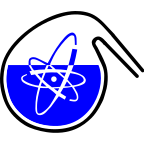Speaker
Description
Aside to pure Physical Chemistry interest, determining uranium speciation is important for environmental monitoring or within experimental studies for possible remediation protocols (and possible application for prospection and extraction is of interest as well). Natural water samples dominated by system UO
Cryogenic Time-Resolved Laser-Induced Fluorescence Spectroscopy (TRLFS) and in-Capillary UV-VIS spectrophotometry have been used for a direct speciation in low concentration ranges (10
However, subsequent spectral series data analysis face two major problems –
- Even robust Multilinear methods (ranging from Parallel Factor Analysis to PCA respecting matrix dependence of luminescence life-times of each component) suffer from ill-conditioned spectral data (as individual components are nearly indistinguishable in both spectral and temporal domains).
- Data analysis provides us with a set of individual component spectra and concentration profiles. But how to assign components to a particular chemical species? In particular, when independent information on chemical composition of studied natural sample is limited - individual component assignment from, often incomplete, literature data could be insufficient.
We propose first-principles-based Computational Chemistry protocol to tackle both problems. Aside to the spin-orbit splitting including quasi-relativistic and relativistic spectral parameter estimation extending the preliminary study 1, a protocol connecting Classical Molecular Dynamics sampling, ground and excited state geometry optimization, normal mode computation and multimode Franck-Condon Factor computation has been proposed for individual components spectra computer simulation (Fig. 1). The preliminary versions of protocol were applied to aquo complex [UO
Literature
1 Višňák J., Steudtner R., Kassahun A., Hoth N.: Multilinear analysis of Time-Resolved Laser-Induced Fluorescence Spectra of U(VI) containing natural water samples, EPJ Web of Conferences, Volume 154, p. 01029 (2017), DOI: 10.1051/epjconf/201715401029.
[2] Višňák J., Sobek L., MetaCentrum 2017 Annual Report (to be published).

